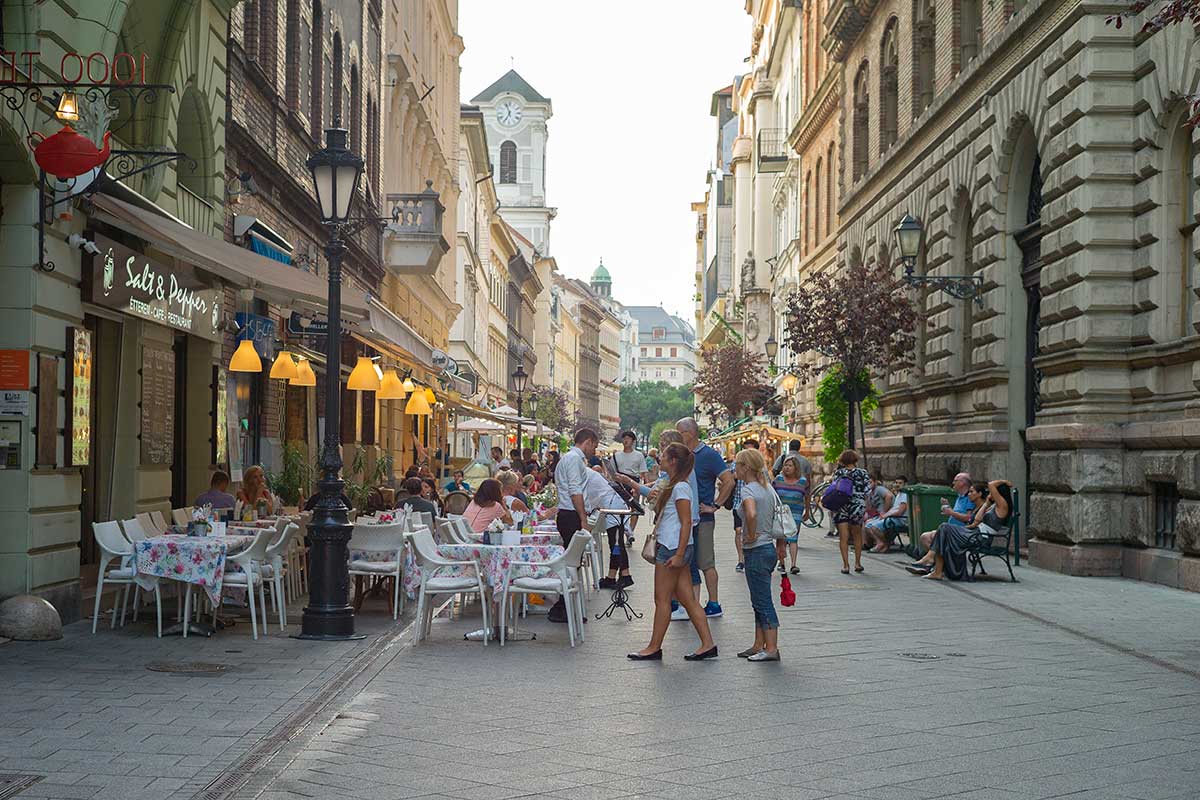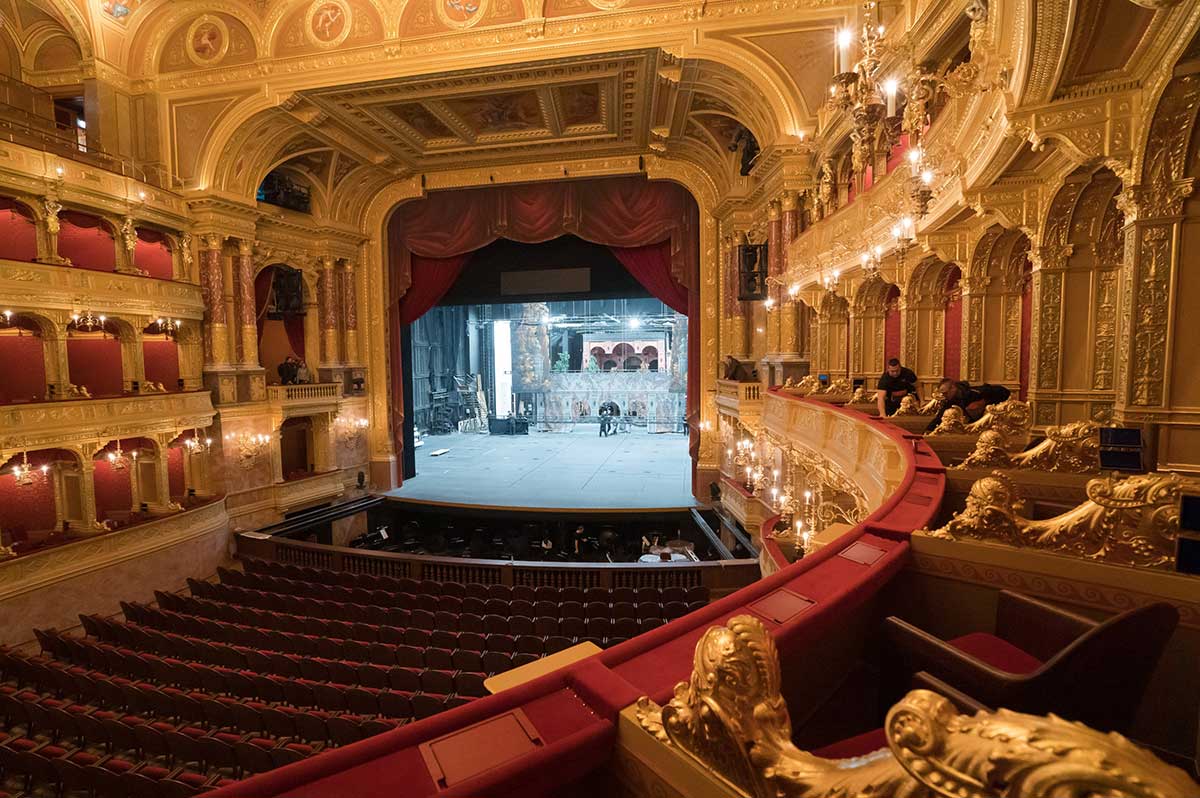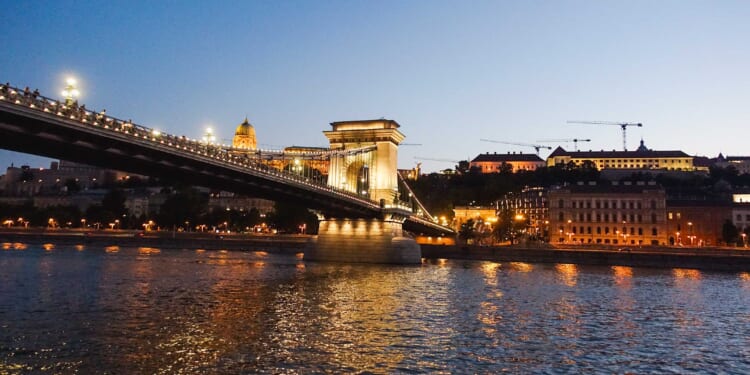It was impossible to ignore the flies. In the heart of Budapest this past overheated June, windows and doors stood open to receive them, so that one’s meal or midday coffee was accompanied by a high whine of winged pests darting from table to table, diving on plates and glasses, and landing swiftly to slurp up any spills. Most were dark fat-bodied houseflies, but here and there, drawn by pulpy orange juice or a glass of sweet wine, were erratic clouds of smaller, lighter-colored fruit flies, riding the sultry air unimpeded from inside to outside and back again, circling like tiny winged bacchantes at a wedding feast. A heat wave was hitting the continent. Some days were perfectly pleasant; on others the mercury climbed as much as 18 degrees above the average daily high. The square in front of Saint Stephen’s Basilica baked in the sun. The air indoors was stifling.
In my hometown of Manhattan, one plunges into the sealed environment of a Starbucks as into a cool pool of blue water, there to let the air conditioning do what Lee Kuan Yew of Singapore said it did: perk up one’s brain, thereby boosting productivity. But in Budapest this splendid invention—“one of the signal inventions of history,” LKY called it—is too often absent, underpowered, or perversely switched off. Like much of Europe, Hungary unaccountably behaves as if no solution exists for summer temperatures. Sweltering heat is presumably to be suffered or siesta’d through, a desultory breath of hot breeze substituting for genuine relief.
Finally, a reason to check your email.
Sign up for our free newsletter today.
Cafe culture in Budapest, as in Vienna and Prague, harks back to the fin de siècle. With its large framed mirrors, ornate wood fittings, and tufted leather banquettes, Művész Coffeehouse, which opened its doors on Andrássy Avenue in 1898, is undeniably glamorous. Day after day, I returned to its cosmopolitan environs for an iced latte with honey, habitually taking the back-corner table to write for a few hours beneath black-and-white framed portraits of the Hungarian artists Margit Gráber and Ildikó Várnagy. My pleasure in this personal ritual was hampered, I must confess, by my bedewed forehead and the swampy feeling, as I perched on that lovely leather, of sweat in the seat of my pants.
I was not alone in my discomfort. One hot afternoon, two prepubescent girls sat with their silver-haired grandmother wilting over chocolate sundaes—the ice cream, scooped out of tulip-shaped glass goblets, all but running off their spoons. Taking pity on the poor kids, I got up and adjusted the thermostat myself and was gratified to hear the air conditioning kick on. Another day, at Kern Collective Coffee, a chic cafe in the Jewish Quarter (patrons gossiping and playing backgammon in the listless atmosphere), the young Turkish barista forgot himself far enough honestly to air his grievances. He too was perturbed by the ubiquitous insects. “What can I do? They don’t spray here!” he protested. “In my country, when summer is coming the government sprays, you know? To keep the insects down. But they don’t do that here—and so you get flies.”

You certainly do. At Ruszwurm Confectionery, a fly that had been buzz-bombing my table settled in to drown itself in my last half inch of lukewarm café latte, in just the way that Flaubert depicts flies dying at the bottom of cider glasses in Madame Bovary. I mentioned this to the proprietress; she shrugged and silently went back to serving cake.
Traveling the world one encounters four basic arrangements at restaurants and cafes: good service, with a tip expected or mandatory (as in America); poor service, with no tip expected (as in France); good service, with no tip expected (as, wonderfully, in South Korea and Japan); poor service, with a tip expected nonetheless or even preadded to one’s bill (as in—you guessed it—Hungary). It may have had something to do with the posh part of Pest I was in, but the establishments never failed to tack on a service charge of 12 percent or 13 percent, even 15 percent at some eateries. Even at unpretentious spots in the youth-oriented Jewish Quarter, and even on the Buda side of the river, service charges were inescapable. Nor was that all.
When I asked for tap water, waiters pretended not to know what it was or how to provide it; they plunked down instead bottles of still (as opposed to sparkling) water, then fled without filling my glass. These bottles were added to the bill, with the aforementioned gratuity on top. In America it is customary to provide tap water for free, while filling and refilling the patron’s glass for him. In Budapest it is just the reverse. One tips the waiter for a service provided by oneself. Service with a smile is a foreign concept: questions to a Hungarian waiter are almost invariably an imposition, and service staff remain throughout the meal as dour as a László Krasznahorkai novel. Lunching in Esztergom, the medieval capital of Hungary, now a city of 29,000 people about an hour by rail from Budapest, I asked my phlegmatic waiter whether a particular dish was very large. Where an American would have lent his opinion, offered helpful context, gone out of his way to reassure or steer me clear, my Magyar garçon merely shrugged and replied, “Vat is large.” His voice was totally uninflected by any note of inquiry.
There were exceptions: at N28 Wine and Kitchen, a modern Hungarian eatery in the Terézváros district, I enjoyed beef tartare and, for my main course, thick slices of tender goose breast with beets and a crunchy-gooey brick of cabbage lasagne in celeriac cream. The service was exquisite, just as the Michelin Guide (which awarded the place a Bib Gourmand rating, signifying excellent value for money) had led me to expect. I would gladly have dined there again, and told my server so, whereupon he informed me that alas, it would be impossible: the whole place would be closed the following week because the entire staff was going on vacation. He himself would be busy at the vineyard he owned with his uncle in the Mátra region and which had produced the excellent dessert wine he poured for me. Such are the vagaries of Europe in the summertime.

Yes, there is much to bemoan in Budapest. Truly, were it not for golden glasses of Tokaji nectar, the wide sky-comprehending reach of the Danube, the scenic walk across the Chain Bridge from Pest (the verdigrised dome and Baroque sprawl of Buda Castle looming ever larger on the farther shore), the sycamores at twilight in Liszt Ferenc Square, the Etruscan bronzes, Umbrian votive statues, and Athenian red-figured amphorae in the cool silence of the Museum of Fine Arts; were it not for the ecstatic throb of music late at night in Szimpla Kert (most famous of the city’s “ruin bars”); the filigreed beauty of Matthias Church, in the interior of which choral concerts are held at no cost to the public; clean plazas (where, every so often, soothingly cool mist sprays up from the pavement), safe walkable streets, and lovely women; were it not for the nightlife that transpires without any of the dysfunction now plaguing Western Europe; were it not for charming shops on backstreets and luxury boutiques on tree-lined boulevards; and were it not for—wonder of wonders—my well-appointed, air-conditioned hotel room, disclosing a view of the Hungarian State Opera House, a breathtaking neo-Renaissance pile where the statues of famous composers surmounting its cornice are lit up at dusk like actors on a stage, and where from the second row one night I saw a world-class performance of La Bayadère, that most opulent of classical ballets (three and a half hours, including two intermissions) . . . truly, were it not for all these attractions, Budapest would be a lousy travel destination. One might feel of it nothing but the heat, the flies, the unfriendliness.
As it stands, however, I may fairly be accused of front-loading my account with unflattering details, with acid commentary on what should, in the end, be accounted fairly minor inconveniences or transgressions. But I have my reasons. You see, I want to warn tourists away from Budapest, or at least the sort of tourist who expects a foreign culture always to conform to his idea of creature comforts and to cater to his every whim. People of a selfish, impatient, atrabilious nature, in my experience, rarely read anything through to the end. So that jewel on the Danube will keep from them its secret splendors, will remain off the paths they beat eagerly to other European destinations every summer. For those of you who have read this far: Have you booked your ticket yet? If not, what are you waiting for? Personally, I plan to return to Budapest next year. Perhaps I will see you there.
Top Photo: The Chain Bridge, Budapest (Salvatore Laporta/KONTROLAB/LightRocket via Getty Images)
Source link


















